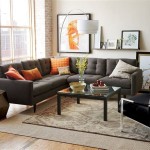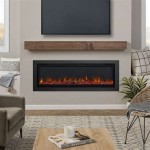```html
Carpet Tile in Living Room: An In-Depth Examination
Carpet tile, also known as carpet squares or modular carpet, presents a versatile flooring option for various spaces, including the living room. Its modular nature allows for design flexibility, ease of installation, and targeted replacement, distinguishing it from traditional broadloom carpet. This article provides a comprehensive analysis of utilizing carpet tile in the living room, examining its advantages, disadvantages, installation considerations, and design possibilities.
Advantages of Carpet Tile in Living Rooms
The selection of flooring materials for a living room involves a careful evaluation of aesthetics, functionality, and cost-effectiveness. Carpet tile offers several distinct advantages that make it a compelling choice for homeowners. These benefits encompass ease of installation, design versatility, and practical considerations such as maintenance and durability.
Ease of Installation: One of the primary benefits of carpet tile lies in its simplified installation process. Unlike broadloom carpet which requires professional installation due to its large size and seaming, carpet tile can often be installed by homeowners with basic DIY skills. The tiles are typically adhered to the subfloor using pressure-sensitive adhesive or double-sided carpet tape, eliminating the need for specialized tools or extensive labor. This ease of installation translates to cost savings, as professional installation fees can be avoided. Furthermore, the modular format allows for phased installation, meaning a living room can be partially covered at a time, minimizing disruption to daily life.
Design Versatility: Carpet tile offers unparalleled design flexibility. The modular format allows for the creation of diverse patterns, textures, and color combinations. Homeowners can mix and match different tile styles to create unique designs, such as borders, accent areas, or geometric patterns. The ability to replace individual tiles also allows for easy updates to the living room's aesthetic without requiring a full flooring replacement. This adaptability makes carpet tile an attractive choice for those seeking a personalized and dynamic living room environment. The availability of various pile heights, fiber types, and textures further enhances the design possibilities, enabling homeowners to tailor the flooring to their specific preferences and needs.
Targeted Replacement and Maintenance: A significant advantage of carpet tile is the ability to replace individual tiles that are stained or damaged. This targeted approach to maintenance eliminates the need to replace an entire flooring area, saving both time and money. In high-traffic areas of the living room, such as near doorways or seating areas, tiles can be easily replaced as needed, extending the overall lifespan of the flooring. This feature is particularly beneficial for households with pets or young children, where spills and accidents are more likely to occur. Regular vacuuming and spot cleaning are generally sufficient for maintaining carpet tile, making it a relatively low-maintenance flooring option.
Disadvantages of Carpet Tile in Living Rooms
While carpet tile offers several advantages, it is crucial to acknowledge its potential drawbacks. These disadvantages primarily relate to appearance, seam visibility, and comfort level compared to traditional broadloom carpets. Understanding these limitations is essential for making an informed decision about whether carpet tile is the right flooring choice for a particular living room.
Seam Visibility: One of the most common concerns regarding carpet tile is the potential for visible seams between the tiles. While advancements in manufacturing have reduced seam visibility, it can still be noticeable, especially in areas with direct sunlight or when using tiles with contrasting colors or textures. The visibility of seams can detract from the overall aesthetic appeal of the living room, particularly for those seeking a seamless and uniform appearance. Proper installation techniques, such as staggering the tiles and using high-quality adhesive, can help minimize seam visibility, but it is often difficult to completely eliminate it.
Comfort and Underfoot Feel: Compared to traditional broadloom carpet, carpet tile can sometimes feel less plush and comfortable underfoot. This is often due to the thinner construction of carpet tiles compared to the thicker pile and padding typically found in broadloom carpets. While some carpet tiles are designed with enhanced cushioning or attached padding, they may not offer the same level of comfort as a high-quality broadloom carpet. For living rooms where comfort is a primary concern, homeowners may need to consider the specific type of carpet tile and potentially add a separate layer of padding underneath to improve the underfoot feel.
Appearance Considerations: Although carpet tile offers design flexibility, some homeowners may find its aesthetic less appealing than that of traditional broadloom carpet. The modular format can sometimes create a more fragmented or less luxurious look, particularly in larger living rooms. The perception of carpet tile as a more commercial or utilitarian flooring option can also be a factor for some homeowners. However, advancements in design and manufacturing have led to the development of carpet tiles that mimic the look and feel of broadloom carpet, blurring the lines between the two flooring options.
Installation Considerations for Carpet Tile in Living Rooms
Successful carpet tile installation in a living room requires careful planning and execution. Proper subfloor preparation, precise tile alignment, and the selection of appropriate adhesive are crucial factors that influence the final outcome. This section outlines key installation considerations to ensure a professional and long-lasting result.
Subfloor Preparation: The subfloor is the foundation for any flooring installation, and its condition significantly impacts the performance of carpet tile. The subfloor must be clean, level, and dry before installation can begin. Any imperfections, such as cracks, holes, or unevenness, should be repaired to create a smooth and stable surface. Concrete subfloors should be tested for moisture content to prevent adhesive failure and potential mold growth. Wood subfloors should be inspected for rot or damage and repaired as needed. Proper subfloor preparation is essential for ensuring proper adhesion and preventing tile shifting or buckling over time.
Tile Alignment and Layout: Precise tile alignment is crucial for achieving a professional and visually appealing installation. Before adhering the tiles, it is recommended to dry-lay the tiles in the desired pattern to ensure proper fit and alignment. Start by finding the center of the room and working outwards, using a chalk line or measuring tape to maintain straight lines. Pay close attention to the direction of the tile pile, as variations in pile direction can create noticeable shading differences. Staggering the tiles can help minimize seam visibility and create a more random and natural look. Carefully cut tiles to fit around walls, doorways, and other obstacles, ensuring a clean and precise finish.
Adhesive Selection and Application: The choice of adhesive is critical for securing the carpet tiles to the subfloor. Pressure-sensitive adhesive is a common option for carpet tile installation, as it allows for easy repositioning and removal of tiles. Double-sided carpet tape can also be used, particularly for smaller areas or for installing tiles on top of existing flooring. It is important to follow the manufacturer's instructions for adhesive application, ensuring that the adhesive is evenly applied and allowed to properly cure. Insufficient adhesive application can lead to tile lifting or shifting, while excessive adhesive application can create a messy and uneven surface. Proper ventilation is also essential during adhesive application to minimize fumes and ensure a safe working environment.
```
Shaw Crafted 24 In X Compose Brown Commercial Adhesive Indoor Carpet Tile 79 99 Sq Ft 7l81200200 At Lowes Com
Interlife Tile Sisalcarpet Com

Trafficmaster Versatile Assorted Multi Colored Commercial Residential 24 X In Peel And Stick Carpet Tile Square 40 Sq Ft Ncvt002 The Home

In A Snap Peel And Stick Carpet Tiles 3 4 Inch 10 Per Case

Foss New Age 24 In X Taupe Gray Commercial Residential Peel And Stick Indoor Or Outdoor Carpet Tile 60 Sq Ft 7sdmn4015pk At Lowes Com

Interpret Shifted States Collection Carpet Tile By Interface

Foss Wide Wale Taupe Beige Commercial Residential 18 X In Peel And Stick Carpet Tile Square 22 5 Sq Ft 7ww8n4010pkg The Home

Modern Carpet Tile Loose Lay Checkered Floor For Living Room Clearhalo

8 Benefits Of Carpet Tiles

Factory Gradual Color Polypropylene Pvc Carpet Living Room Tile Office Commercial And Price Made In Com








